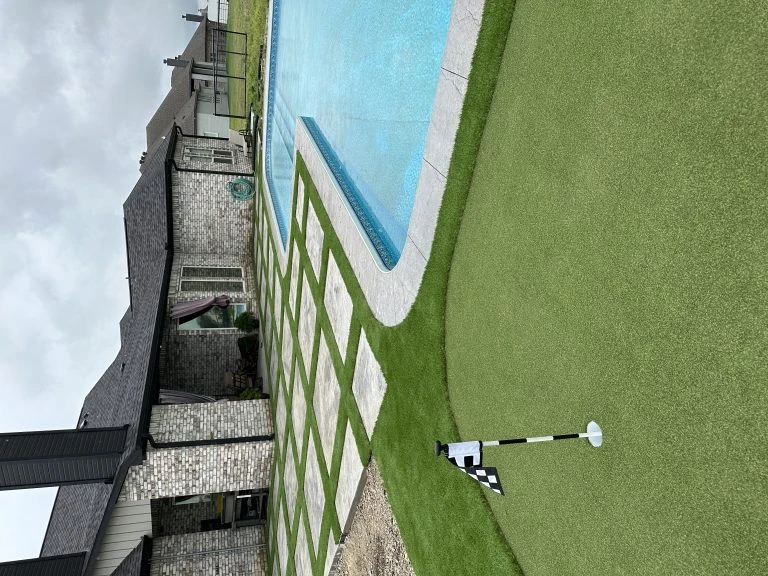 A lush, green lawn is the dream of many homeowners, but the constant maintenance, watering, and mowing can be a daunting task. Enter artificial grass – a low-maintenance, eco-friendly alternative that stays green and pristine all year round. This comprehensive guide will walk you through everything you need to know about artificial grass installation, from the benefits and preparation to the step-by-step process and maintenance tips.
A lush, green lawn is the dream of many homeowners, but the constant maintenance, watering, and mowing can be a daunting task. Enter artificial grass – a low-maintenance, eco-friendly alternative that stays green and pristine all year round. This comprehensive guide will walk you through everything you need to know about artificial grass installation, from the benefits and preparation to the step-by-step process and maintenance tips.
Why Choose Artificial Grass?
Before diving into the installation process, it\'s essential to understand why artificial grass is a fantastic choice for your lawn. Here are some key benefits:
1. Low Maintenance
Artificial grass requires minimal upkeep compared to natural grass. No more mowing, watering, or fertilizing – just a beautiful, green lawn with little effort.
2. Water Conservation
With artificial grass, you\'ll significantly reduce your water usage, making it an eco-friendly option, especially in areas prone to drought.
3. Durability
High-quality artificial grass can withstand heavy foot traffic, pets, and various weather conditions, ensuring your lawn looks great for years to come.
4. Allergy-Free
Artificial grass doesn\'t produce pollen, making it an excellent choice for those with allergies.
5. Aesthetic Appeal
Enjoy a consistently green and manicured lawn that enhances your property\'s curb appeal.
Preparing for Installation
Proper preparation is crucial for a successful artificial grass installation. Follow these steps to ensure your project goes smoothly:
1. Measure Your Area
Accurately measure the area where you plan to install artificial grass. This will help you determine how much material you\'ll need.
2. Choose the Right Grass
Select the type of artificial grass that best suits your needs. Consider factors like pile height, density, and color to find the perfect match for your space.
3. Gather Materials and Tools
You\'ll need several materials and tools for the installation process, including:
- Artificial grass rolls
- Weed barrier fabric
- Sand or crushed stone
- Adhesive or joining tape
- Utility knife
- Rake
- Compactor
- Turf nails or staples
- Broom or power brush
4. Remove Existing Lawn
Clear the area of any existing grass, plants, rocks, and debris. Ensure the ground is level and free of any obstacles.
5. Install a Weed Barrier
Lay down a weed barrier fabric to prevent weeds from growing through your artificial grass. Secure it in place with landscape staples.
Step-by-Step Installation Process
Now that you\'re prepared, it\'s time to install your artificial grass. Follow these steps for a seamless installation:
1. Prepare the Base
Create a stable and well-draining base by spreading a layer of sand or crushed stone over the area. Use a rake to level the surface, then compact it with a compactor to ensure a solid foundation.
2. Lay the Artificial Grass
Roll out the artificial grass over the prepared base. Make sure the grass fibers are facing the same direction for a uniform appearance. Trim any excess grass using a utility knife.
3. Secure the Edges
Secure the edges of the grass using turf nails or staples. Place them along the perimeter, spacing them about 6 inches apart.
4. Join the Seams
If you\'re using multiple pieces of artificial grass, join the seams using adhesive or joining tape. Apply the adhesive to the tape, then press the edges of the grass together firmly.
5. Add Infill
Spread a layer of infill material, such as silica sand or rubber granules, over the artificial grass. This helps to weigh down the grass, support the fibers, and improve drainage. Use a broom or power brush to evenly distribute the infill and lift the grass fibers.
6. Final Touches
Inspect the entire installation for any loose edges or uneven areas. Make any necessary adjustments to ensure a flawless finish.
Maintenance Tips
While artificial grass requires minimal maintenance, a little care can go a long way in keeping it looking its best. Here are some maintenance tips:
1. Regular Cleaning
Remove debris, leaves, and dirt from your artificial grass using a broom, leaf blower, or garden vacuum. This prevents buildup and keeps your lawn looking fresh.
2. Brush the Grass
Periodically brush the grass fibers with a broom or power brush to keep them upright and looking natural. This is especially important in high-traffic areas.
3. Rinse with Water
Occasionally rinse your artificial grass with water to remove dust and pet waste. For stubborn stains, use a mild detergent and water solution.
4. Check for Repairs
Inspect your artificial grass regularly for any damage or loose edges. Promptly repair any issues to maintain the integrity of your lawn.
Conclusion
Artificial grass installation is a straightforward process that can transform your outdoor space into a beautiful, low-maintenance oasis. By following this ultimate guide, you\'ll be well-equipped to tackle your installation project with confidence and enjoy the numerous benefits of artificial grass for years to come. Whether you\'re a DIY enthusiast or prefer to hire a professional, investing in artificial grass is a decision that will enhance your property\'s aesthetic appeal and provide a practical solution for a lush, green lawn year-round.

